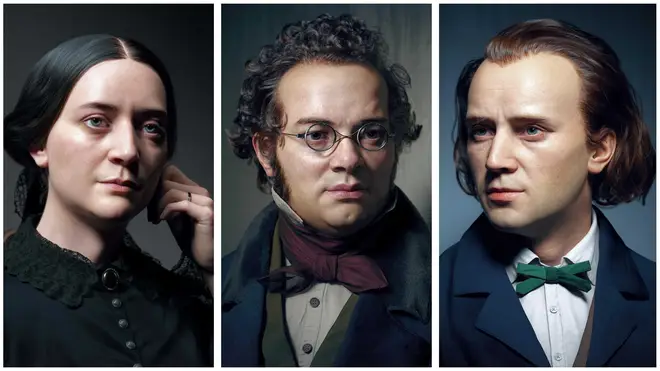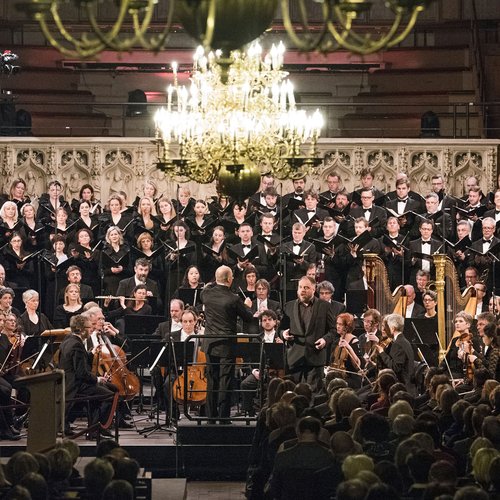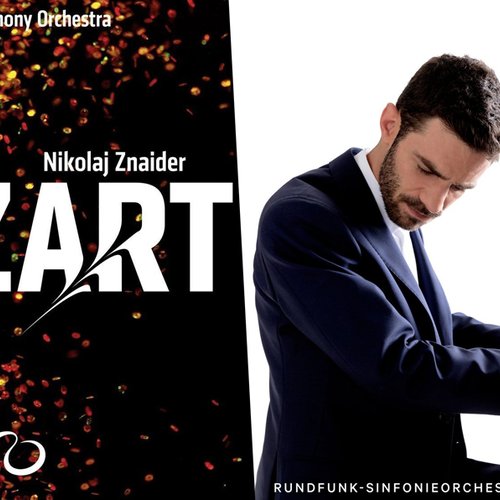Romantic composers brought back to life in artist’s hyperrealistic 3D portraits
15 July 2020, 15:41 | Updated: 18 August 2020, 09:57

The great composers’ faces, reconstructed as if they are alive today.
An artist has been crafting digital portraits of the great Romantics, bringing six musical greats once shrouded in awe and mystery into the modern world.
Clara and Robert Schumann, Chopin, Liszt, Brahms and Schubert can all be admired in 3D and in colour, as if reborn from the ashes.
Hadi Karimi, the Iranian CG artist behind the new renderings, is an expert in sculpting 3D portraits of Hollywood stars and other famous figures. But, he says, he’s “always been a fan of classical music”.
“We grew up with all these beautiful symphonies and memorable melodies, but do we know the minds behind them?” Karimi tells Classic FM.
“Sometimes we remember them by just a name and if we’re lucky there’s a painting or a black and white photo from centuries ago that could barely show us what they actually looked like.”
Read more: Chopin’s face is brought to life in artist’s incredible 3D portraits >
Faces, as Karimi says, get lost in history. Photographs quickly deteriorate, and we are left with only death masks and portraits to rely on for an accurate picture of what our treasured historical figures actually looked like.
Karimi adds: “The mid-19th century was the time that photography started to become popular throughout Europe and paintings, life masks, began to fade. Daguerreotypes were very expensive and only the wealthy could afford them – and the same with masks and paintings!”
Of Chopin, there are just two known photographs: an unflattering daguerreotype, which was taken when the Polish composer was rather ill; and a reproduced version of a deteriorated photograph, that was lost during the Second World War. With no ‘true’ photographs to play with, Karimi worked from the composer’s death mask.
For Schubert, who – incredibly – wasn’t famous during his lifetime, the situation was equally tricky, as the Austrian early Romantic couldn’t have afforded a skilled artist to do his portrait.
“Most of the portraits of him were done decades after his death when his music finally started to make it to the mainstream,” Karimi explains. “All I could find as a reference was just one photo of a cast impression of his life/death mask, unfortunately the original mask is lost or destroyed in the market.”
But for Brahms and Liszt, the process was slightly easier.
Liszt is based on photographs of the composer, taken in 1858. And for the former, “Luckily there are many photographs of Brahms on the internet, even from his teenage years! I tried to picture him in his thirties (around 1860).”
All the sculpting was done using ZBrush, a digital sculpting tool that combines 3D and 2.5D modelling, texturing and painting. The colour texture was painted in Substance Painter, and for the German maestro’s floppy locks, the artist used XGen, an interactive tool used for creating realistic-looking hair.
“In this series of facial reconstructions, not only did I gather the references like photographs, paintings, life/death masks, … but also took a step further to study their personality so that I could reflect that in their facial expressions,” Karimi says.
“I hope that I did them justice.”
The reaction to his portraits has been extraordinary. “Amazing as usual,” one Twitter user comments. Others have requested Beethoven and Wagner as the next composers to get the 3D treatment.
British pianist and Chopin expert Warren Mailley-Smith, who five years ago memorised the Romantic’s entire repertoire for solo piano, remarked it was “quite incredible to actually see the man”.
“Some of these great composers can end up with such legendary, god-like status it’s easy to forget how perfectly ordinary as human beings they otherwise were.”
Alas, this appears to mark the end of Karimi’s succession of composer portraits – for now at least. But it’s good news: Clara Schumann, the great composer-pianist, is acting as a bridge to his next project: Women in History.












